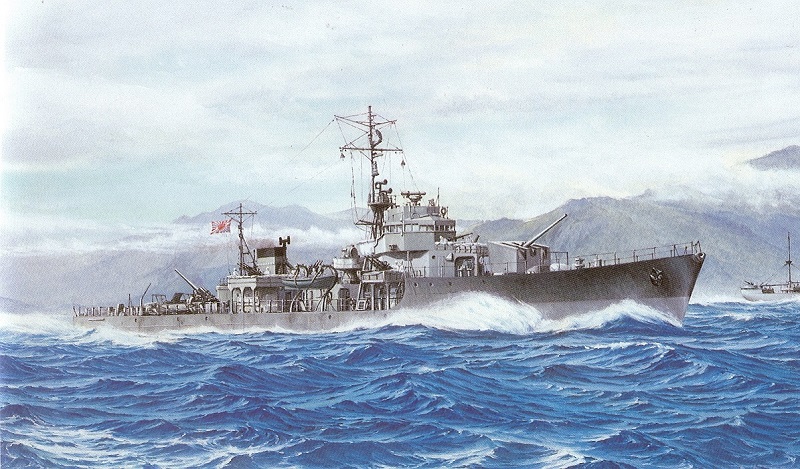© 2009 Bob Hackett and Peter Cundall
17 November 1944:
Harima. Laid down at Harima Ship Building, Ltd.
25 January 1945:
Launched and numbered CD-156.
8 March 1945:
Completed and registered in the IJN.
10 March 1945:
At 1300 departs Aioi.
11 March 1945:
At 1530 arrives at Kure. Takes on supplies.
16 March 1945:
At 0800 departs Kure and at 1800 arrives at Saiki.
10 April 1945:
Off Mutsure Light. CD-156 is damaged by a mine.
At 0904, USN codebreakers intercept and decrypt a message from CD-156 that reads: “Struck a mine at 0634 in position bearing 11 degrees, distant 1830 meters from Mutsure Shima Light (middle of east channel). At present there is practically no flooding. Can make slow speed on the engines. Will proceed to Moji for repairs. Four persons slightly wounded. Am investigating damage.”
24 April 1945:
Arrives at Kure.
15 August 1945:
Japan accepts the Allies “Potsdam Declaration” (of unconditional surrender) and hostilities cease.
30 November 1945:
Removed from the Navy List.
1 December 1945:
Assigned to the Allied Occupation Force. Serves as a minesweeper. [1]
4 September 1947:
Maizuru. Ceded to the United Kingdom.
11 December 1945:
Scrapped by Iino Shoji.
Authors' Note:
[1[ In 1945, the U. S. Army Air Force launched a five-phased campaign known as “Operation Starvation” to mine Japan’s home waters. The USAAF used 80 to 100 B-29 “Super Fortress” heavy bombers of the 21st Bomber Command based at Tinian in the Marianas. The B-29s could carry seven 2,000 lb. or twelve 1,000 lb. mines.
Beginning on 27 March 1945 and continuing until 5 August 1945, the B-29s flew 1,529 nighttime radar sorties and laid 4,900 magnetic, 3,500 acoustic, 2,900 pressure and 700 low-frequency mines for a total of more than 12,000 mines laid in Japanese waters. These mines sank 294 ships, damaged 137 beyond repair and damaged another 239 that could be repaired. The total was 1, 250,000 tons sunk or damaged or about 75 percent of Japanese shipping available in March 1945. Only 15 B-29s were lost during the mining campaign.
Postwar, removal of these mines posed a major challenge for the Allied Occupation Forces. They pressed 269 Japanese ships of various types into mine sweeping service to augment their own efforts.
Thanks go to John Whitman of the USA for info on CNO intercepts of Japanese messages.
-Bob Hackett and Peter Cundall
Back to
Escort Page



